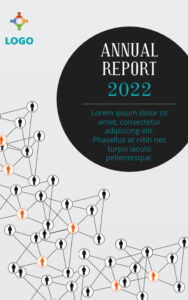The process of proofreading annual reports in the UK
Firstly: who produces annual reports and what are they?
This month, we look at the process of proofreading annual reports.
There are many communications agencies based in London and the UK that specialise in the design, production and distribution of annual reports.
Listed companies in the UK (i.e. public companies with shareholders) have to produce an annual report and statutory accounts for their shareholders and HMRC after their year end. The report follows a particular format and a good agency will offer advice and guidance on how to put one together. You can find out more about what makes a good annual report here but to paraphrase, it should be:
Accurate, Connected, Consistent, Complete, On-time,
Unbiased, Navigable and Transparent.
The annual report format
An annual report comprises three sections. Firstly, “the front”. This is the strategic report, and covers how the company has performed against its goals for the year. This section may also cover plans for the coming year.
Then “the middle”. This is the governance section and includes information about the board of directors, the board committees, and directors’ remuneration.
And finally, you guessed it, “the back”, which includes the auditor’s report, the financial statements, and accompanying notes. These reports can range from around 120 to 350/400 pages long.
Why is proofreading annual reports so important?
In traditional publishing a copy editor is involved in all the pre-print editing and formatting processes, and the proofreader steps in at the end of the process and picks up any small errors that have slipped through.
In corporate reporting, the proofreader tends to be a catch-all for everything. The only thing a proofreader should not do is re-write anything, but we do make suggestions if something doesn’t make sense.
A report can come to a proofreader in the early stages of production and/or as the final check before publication. Either way, even if the report is close to be signed off, it is not uncommon to flag 1,000+ amendments in a big report. This is because unlike a book, the content often changes, which in turn affects the layout and style.
Also, in annual reporting we compare the document to brand guidelines, check formatting and address artworking errors that creep in, as well as ‘herding’ the spelling, grammar and punctuation. You have to keep your eyes trained on those unruly bullet points …
I digress. The main aim is to achieve a consistent result that aligns across all the platforms the end-client uses.
How does it work from a proofreader’s persective?
The agency usually provides a PDF (or less often, a Word document) and a set of client guidelines, or preferences, specific to the end-client. In using them, we work towards a report that is consistent throughout in the way it is written, free of distracting errors, and which relays pertinent information about the company in a clear and engaging way.
These guidelines must be digested first, and any deviations marked up using the annotation tools (when I first started in the industry we used magic erasable red and green pens on printouts, but those days are gone!). They can run from several pages (UK) to 50+ pages of information (hello, America!)
What I do next
Now at this point I am going to explain what I do next, but every proofreader has a different approach. I will never read it backwards, for example. Forwards works just fine for me! And I do not rate Grammarly but I know others do.
I do love tech though and it features in my processes. If I have a PDF to check the first thing I do is export it to Word. The ‘export to Word’ function costs me about £22 a year and I find it invaluable. PDFs are not designed to be used for editing. Word, on the other hand, is all about that. I run the document through Editor (useful for picking up spelling in US/UK English) and then I run PerfectIt.
PerfectIt addresses consistency and picks up words vs numerals in numbers, inconsistent bullet punctuation and different spelling of the same thing. Consistency across the document is incredibly important. Finally, if there are long sections of text I will use the Read Aloud function, which is great for picking up repetition or anomalies. Of course, if I receive a Word document I do all of the above and make the amendments in Track Changes.
Marking up the annual report
Now, back to my PDF. Using the client preferences I begin by searching for words that are in the wrong case. I will go into more detail on how that works in my next blog. As I go along, I use the annotation tools. With annotation tools, you can strike through text, delete and replace text, query text, highlight, draw, or just make a comment. None of these amendments are actioned at the time – I do not edit the PDF. I offer advice and guidance. I highlight mistakes and provide a roadmap of improvements that could be made, like use of sentence case instead of title case in headings, missing page numbers, repetition in the text, incorrect grammar and spelling mistakes. When all the checks are done and I am familiar with where any problems are, I read the report very carefully.
When I email it back to the agency I include notes of things I think they (or the end-client) need to look at.
For more information on how I work with annual reports, head over to my Services page.
